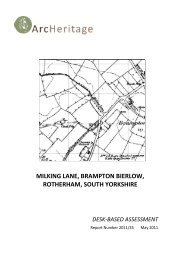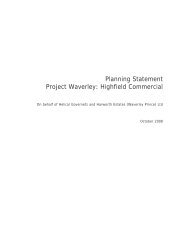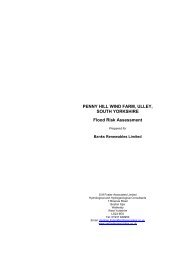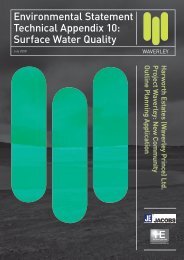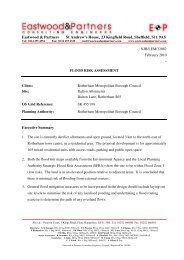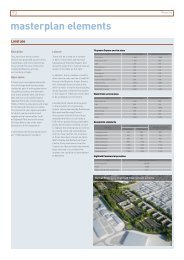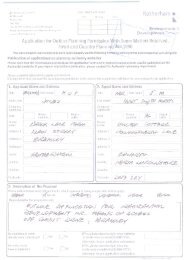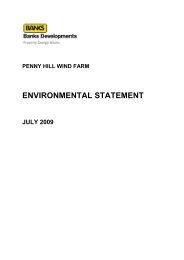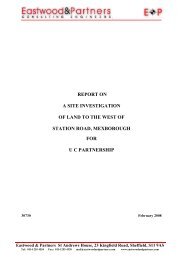environmental statement - Rotherham's Online Application for ...
environmental statement - Rotherham's Online Application for ...
environmental statement - Rotherham's Online Application for ...
You also want an ePaper? Increase the reach of your titles
YUMPU automatically turns print PDFs into web optimized ePapers that Google loves.
10.28 A significant effect (in terms of the EIA Regulations) is considered to occur<br />
where the combination of sensitivity and magnitude results in a “major” or<br />
“moderate” effect.<br />
10.29 The assessment text (below) considers in detail only those features <strong>for</strong><br />
which a potential effect of “moderate” or higher significance is initially<br />
predicted upon the setting of the feature, based on the distance of the<br />
feature from the site and the feature‟s designatory status (in accordance<br />
with the matrix presented above), and considers the potential effect<br />
against a more defined explanation of the feature‟s setting. Where<br />
considered necessary, setting is defined in terms of the immediate<br />
physical surroundings and associations of the feature, or in wider terms,<br />
such as the presence of key long views to or from that feature which are<br />
important to its understanding.<br />
ZONE OF THEORETICAL VISIBILITY<br />
10.30 The ZTV used in this assessment has been calculated from turbine tip<br />
height to ground contours and does not allow <strong>for</strong> any vegetation (such as<br />
mature blocks of trees) or settlement. The ZTV is calculated to reflect<br />
visibility at approximately 2m above ground level. The ZTV is further<br />
explained in Section 6: Landscape and Visual Assessment of this ES.<br />
10.31 In considering effects using this methodology, the following points need to<br />
be borne in mind. Firstly, the ZTV is a theoretical construct, based upon a<br />
fairly crude base terrain modelling only, with no modelling of settlement<br />
and vegetation cover. Within each “band”, based on numbers of turbines<br />
theoretically visible, no distinction is made in how much of each turbine is<br />
visible. The ZTV there<strong>for</strong>e represents a “worst case scenario” and in reality<br />
visual effects may be substantially less than suggested. Secondly,<br />
mechanical application of the methodology will generate major and<br />
medium effects (simply based on distance and designatory status), <strong>for</strong><br />
which (in case of visual effects upon settings) no mitigation is proposed.<br />
Where this is the case, predicted medium or major effects are discussed in<br />
detail within the assessment text (in Potential Operational Effects) and any<br />
ameliorating conditions highlighted.<br />
BASELINE DESCRIPTION<br />
BASELINE ASSESSMENT<br />
10.32 A desk-based assessment was undertaken by ASWYAS to establish the<br />
baseline condition <strong>for</strong> the proposed development site, based on a study<br />
area (the initial proposed development area) and a 1km buffer around it.<br />
The report is included in Appendix 6. This was supplemented by the<br />
commissioning of a geophysical survey, also carried out by ASWYAS,<br />
over the footprint of the proposed development. The report is also included<br />
in Appendix 6. It is not proposed to repeat that in<strong>for</strong>mation here, but the<br />
following sections have drawn upon that work, supplemented by a<br />
separate consideration of cultural heritage features at a greater distance<br />
229<br />
Penny Hill Wind Farm<br />
Environmental Statement



